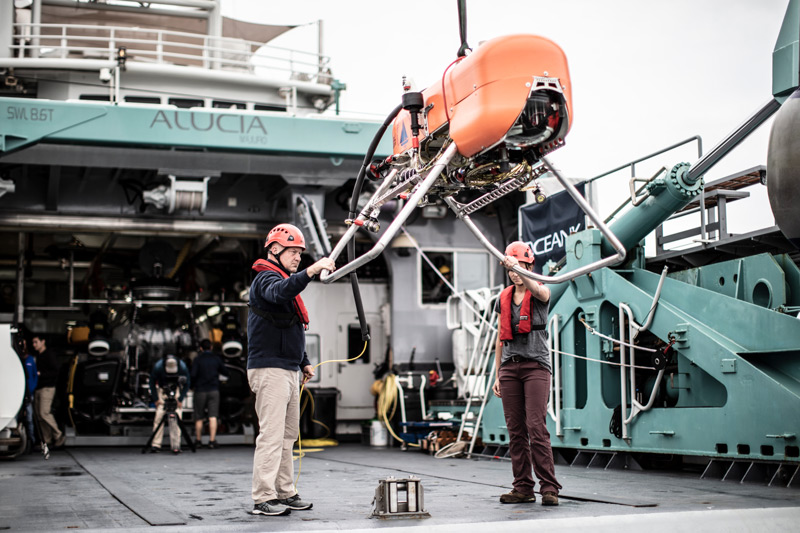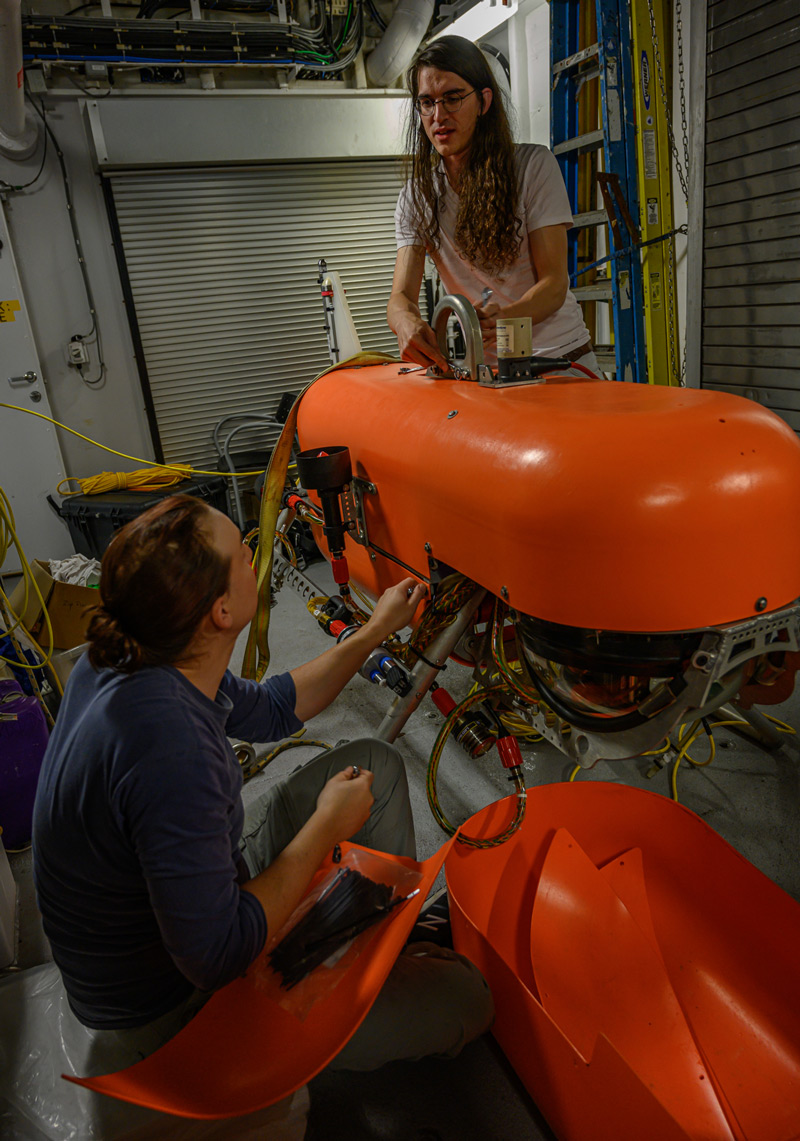
By Tim Shank, Ph.D., Orpheus Autonomous Underwater Vehicle Science Lead, Woods Hole Oceanographic Institution
Access to depths below 6000 meters has been historically very limited and fraught with difficulty and risk due to the immense pressures of extreme depths. Since 2014 and the loss of the hybrid remotely operated vehicle Nereus at hadal depth, the deepest part of the ocean has been closed to systematic exploration and targeted sample collection by researchers.
To return science to depths hadal zone in a way that minimizes the risks associated with catastrophic failure, engineers at WHOI and NASA’s Jet Propulsion Laboratory collaborated to create a networked fleet of hadal AUVs: small, lightweight platforms with a modular design based on the “cubesat” philosophy capable of being deployed from almost any ship and of reconfiguring their mission parameters on-the-fly.
Orpheus is both the new class of autonomous underwater vehicle (AUV) capable of reaching the ocean’s greatest depths and the first vehicle of the class. Two identical Orpheus AUVs were built in 2018, named Orpheus and Eurydice after the famous pair from Greek mythology who adventured through the depths of Hades.

Woods Hole Oceanographic Institution biologist Tim Shank and engineer Molly Curran launch autonomous underwater vehicle Orpheus from the OceanX Research Vessel Alucia during a 2018 expedition to test the vehicle. Image courtesy of Courtesy of OceanX Media © 2018. Download image (jpg, 11.8 MB).
The design of Orpheus is based on proven technology to minimize construction, shipping, and operational costs that permit it to be launched from small research vessels as well as ships of opportunity. In addition, it incorporates control and mapping software developed by the Jet Propulsion Lab that enables new performance standards than conventional AUV technology and eventually, the ability to reconfigure its objectives on-the-fly. Four fixed-directional thrusters and a compact shape make Orpheus nimble, permitting it to explore near the seafloor, land to collect samples, and lift off again to continue its mission.
Compared to vehicles capable of similar missions, Orpheus vehicles are designed to be widely produced, simple to operate, and deployable from small ships of opportunity, even those that specifically outfitted as research vessels. This design philosophy will enable routine access to a broader community of scientists and explorers. It will also serve as a first step on the path to exploring ocean worlds beyond Earth by conducting missions that serve as analogs for those that might be one day be launched in the ice-covered oceans of Europa or Enceladus.
In addition, Orpheus also carries a unique bit of heritage. In 2012, when James Cameron descended to Challenger Deep in the Mariana Trench, he piloted Deepsea Challenger , submersible that was constructed mainly of syntactic foam—a rigid flotation material composed of microscopic glass spheres embedded in epoxy resin. The syntactic foam in Orpheus and its twin, Eurydice came from spare material produced for Deepsea Challenger.
Orpheus was first tested in September 2018 with the ocean exploration organization OceanX and in September 2019 from the WHOI-operated research vessel Neil Armstrong. Each test offered the opportunity to move to successively greater depths and to complete more complex missions. This will be the first test of both vehicles.

Woods Hole Oceanographic Institution engineer Casey Machado (left) and NASA Jet Propulsion Laboratory engineer Russell Smith prepare Orpheus for a 2019 expedition. Photo by Marine Imaging Technologies, LLC © Woods Hole Oceanographic Institution. Download image (jpg, 635 kb).